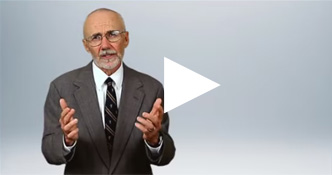Strategies for Getting Out of the Office and Staying Out
by William J. Moran, J.D., M.S.Ed.
Published in NSFRE Journal-Spring 1992
Have you heard it enough? I have. “Effective planned gift fundraising is not accomplished behind a desk. Planned giving is fieldwork. You must get out of the office for success.” Like you, I hear these lines and over and over in seminars and I read them all of the time in the literature. And you know, I believe them. Planned giving requires one-on-one contact with prospects and donors. These concepts make common sense and my experience confirms their value.
You too, are likely convinced of the importance of getting out and making calls. That is not the problem. The problem is how to do it. How do you tear yourself away from the day-to-day administrative details that bedevil your attempts to get out and make calls?
Well, you got to have strategies. I said strategies, not strategy. My experience is that no single strategy is enough in planned giving. I have found that several overlapping strategies provide the best formula for success. Therefore, a series of strategies for getting out of the office follow.
I. Clear Understanding with your CEO
Your boss obviously is a crucial component of a strategy to get out of the office. Involve him or her from the beginning. Sit down and discuss your job. Do the following: (1) Review your job description if you have one; (2) Examine your priorities now and what they should be; (3) go over your present internal office duties.
Reach common ground with your CEO. This review process should result in: (1) a clear understanding that you will get out and see donors; (2) an agreement that your performance evaluation will center on whether you are out seeing donors; and (3) an annual plan which features outside donor contacts.
II. The Plan
Set a certain number of face-to-face donor contacts. Sit down with your boss set an annual number of several hundred donor face-to-face contacts (three hundred contacts per year is a little over one per working day).
By face-to-face contacts, I mean some personal contact as opposed to phone calls or letters. Often these contacts will be visits to the donor’s home. Other contacts could include taking donors to lunch; giving tours of your facilities; or inviting them to other special events. In hospital fundraising, contacts would encompass visits when donors are patients in your hospital.
This goal for face-to-face contacts focuses you outward, toward donors. If one is out in the field seeing donors, relationships will follow. If one combines relationships with asking, gifts will in turn occur.
Core Contact Calendar. A friend of mine, who is also a great salesman, has two simple concepts that he claims are the essence of sales. First, he picks out his best prospects. He calls them his “core people”. Instead of attempting to call on everyone equally, he concentrates on his best possibilities.
The second key to success, he says, is repetition. He sees his best customers religiously, once a month to the day since the last visit. He takes the time to see these people over and over again. As a result, he forms the relationships that are crucial for great sales work. The sales orders flow naturally from the relationships.
With your CEO, go over your institution’s twenty-five “core” prospects for planned giving. Generally, these individuals are your institution’s best friends and should come readily to mind. You will end up with a mixed list. It will include both those have already made planned gifts and those who are prospects for such gifts. Now give these people the attention they deserve. Set up a calendar whereby you will be in touch with them ech month for at least ten months annually. Some fundraisers call these interactions “moves”. Include in this core schedule four to six face-to-face contacts a year. Use the calendar to track other interactions also, such as telephone calls, progress letters, clippings of interest, birthday cards, Christmas cards, flowers and so on. This core contact calendar accomplishes several things. Obviously, it will force you to concentrate on your best prospects. In addition, the calendar will help keep you concentrated on donors and away from administrative duties.
Finally, it provides an important method of accountability between the planned giving officer and CEO. Performance on this calendar should form an important part of the planned giving annual evaluation.
Set a certain number of planned giving agreements. Planned giving is a different form of fundraising, but it is still fundraising. The bottom line is still money raised in some form or other. Twenty bequest expectancies or gift annuities likely represent hundreds of thousands of dollars. So sit down with your boss and decide on an annual goal for the number of agreements closed. These agreements include will expectancies, gift annuities, pooled income gifts, real estate transfers and charitable trusts.
Set an annual goal for the number of agreements, not the number of individuals making the gifts. It does not matter if three agreements come from the same person or if all twenty of your agreements come from ten donors.
In fact, multiple planned gifts from individuals should be encouraged. Planned giving is a continual process for donors. Those who already have your charity in their will are the best prospects for a “bridge gift” such an annuity. An annuity allows them to accelerate their giving while still living.
The actual number of agreements set as your goal depends on where your charity is in fundraising and planned giving. A university with a well-developed donor base and planned giving program would emphasize a larger goal of more sophisticated giving plans such as charitable trusts. A small institution just entering planned giving should focus almost entirely on bequest expectancies.
III. Two Caveats
Caveat #1. Delegate, delegate, delegate. I know that advice is easy to give on this subject but hard to carry out. Still, you must delegate some of the administrative details and paper that crosses your desk. Otherwise, you will have a difficult time getting out of the office.
Use secretarial support and a dictating machine for acknowledgement letters. Use a publication firm to provide you with copy-ready planned giving literature with the option of customization. Have office staff do much of the detail work on getting mailings out. Finally, avoid like the plague, meetings and other tasks that have no relevance to planned giving.
Caveat #2. Remember to ask for the gift. None of the strategies outlined above will lead to productivity unless you remember to ask for the gift. So, to be sure that you don’t forget, set a certain number of asks each week (Two a week is one hundred a year). Ask people to join your heritage society. Ask them if they would consider a gift annuity or other life income agreement. Each planned giving vehicle presents the opportunity for another call and another ask. Make a certain number of “asks” part of your annual plan.
Conclusion
You can get out of the office. To do so, you must restructure your job so that donor contact is primary. This requires a planning and goal setting process with your CEO. Your performance evaluation should focus on the number of donor contacts; following through on a core contact calendar for our best supporters; and the number of planned giving agreements obtained. Beware: Delegate your administrative detail and do not forget to ask for the gift. You can get out of the office – come on, just do it!
Bill Moran, The Moran Company, specializes in nonprofit executive searches
for executive directors, fundraising staff and other top nonprofit leadership.
www.morancompany.com
© 2008 The Moran Company
www.MoranCompay.com
“We find great nonprofit executives”
Posted in Fundraising Articles
Subscribe
Join more than 10,000 nonprofit professionals, community leaders and board members who receive e-mail updates from The Moran Company.






